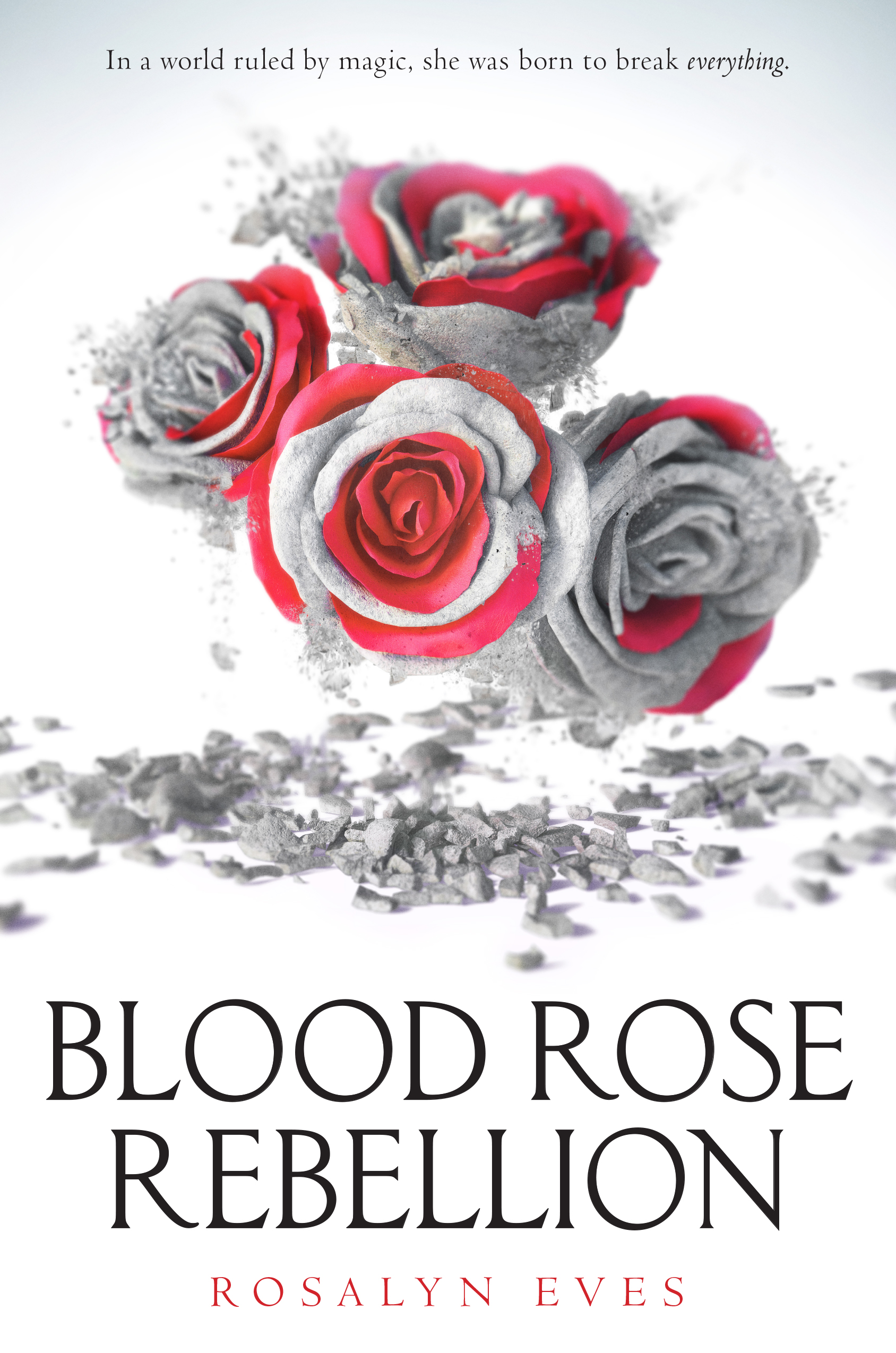 Rosalyn Eves is joining us today to talk about her novel Blood Rose Rebellion. Here’s the publisher’s description:
Rosalyn Eves is joining us today to talk about her novel Blood Rose Rebellion. Here’s the publisher’s description:
The thrilling first book in a YA fantasy trilogy for fans of Red Queen. In a world where social prestige derives from a trifecta of blood, money, and magic, one girl has the ability to break the spell that holds the social order in place.
Sixteen-year-old Anna Arden is barred from society by a defect of blood. Though her family is part of the Luminate, powerful users of magic, she is Barren, unable to perform the simplest spells. Anna would do anything to belong. But her fate takes another course when, after inadvertently breaking her sister’s debutante spell—an important chance for a highborn young woman to show her prowess with magic—Anna finds herself exiled to her family’s once powerful but now crumbling native Hungary.
Her life might well be over.
In Hungary, Anna discovers that nothing is quite as it seems. Not the people around her, from her aloof cousin Noémi to the fierce and handsome Romani Gábor. Not the society she’s known all her life, for discontent with the Luminate is sweeping the land. And not her lack of magic. Isolated from the only world she cares about, Anna still can’t seem to stop herself from breaking spells.
As rebellion spreads across the region, Anna’s unique ability becomes the catalyst everyone is seeking. In the company of nobles, revolutionaries, and Romani, Anna must choose: deny her unique power and cling to the life she’s always wanted, or embrace her ability and change that world forever.
What’s Rosalyn’s favorite bit?

ROSALYN EVES
As a debut novelist, being asked to choose my favorite part of the story is a bit like being asked to choose my favorite child (the correct answer, for those interested, is that it depends on the day).
But one of the things I loved about writing Blood Rose Rebellion was the research—specifically, finding little details that made the setting come alive. The novel is set primarily in an alternate nineteenth-century Hungary that closely resembles our world, with the addition of magic.
When our intrepid heroine, Anna, first arrives in Hungary—having been sent from Britain in disgrace—she’s not disposed to like it. She’s been forced to give up a familiar world for one she only knows through her grandmother’s stories. Instead of the glamour of the London season, she finds herself at Eszterháza, a run-down estate surrounded by farms and fields and miles from any kind of society.
When I first started researching Hungarian noble estates, I picked Eszterháza because it belonged to a preeminent 19th century Hungarian noble family, and the location was good for the story I wanted to tell. But as I dove into the research, I was thrilled by the ways the estate mirrored some of the themes and even the tonal quality I wanted in the book.
In the mid 18th-century, an Esterhazy prince decided to expand the existing hunting lodge into an estate to rival Versailles—and poured an insane amount of money into what was essentially swamp land to do so. Joseph Haydn lived at the estate for months, composing music: his baryton trios, multiple operas, and Opus 33, among others. Empress Maria Theresa visited the palace with the entire Viennese court.
But seventy-five years later, this estate had been virtually abandoned. A 19th century British visitor reported that bats were lodging in the magnificent opera house; a guidebook to the estate claims that sheep were kept in the ornate Sala Terrena.
I loved both details—the crumbling aristocratic estate made a perfect visual metaphor for the diseased society Anna comes to resist. But my very favorite detail was this:
Two separate travel narratives reported the existence of a fey child in the swamps near Eszterháza in the 18th century. The boy was perhaps ten, with webbed feet and long, dagger-like nails, living off fish and frogs. Some kind-hearted individual living on the estate tried to rescue the child by bringing him into the palace, but he escaped weeks later and eventually disappeared.
I wondered about this child, how he came to be in the swamp, how his existence persisted in urban legends surrounding a baroque estate. Somehow, the presence of the uncanny in combination with an otherwise mundane (if expensive) palace made both seem more otherworldly. In my story, the child exists only as a statue in the hallways, but the existence of that other-world only a breath away from a manufactured reality manifests in various ways throughout the book—though you’ll have to read the book to find out how.
In many ways, this book is my love letter to Hungary—and I hope that details like these help readers fall in love with Hungary too.
LINKS:
BIO:
Rosalyn Eves grew up in the Rocky Mountains, dividing her time between reading books and bossing her siblings into performing her dramatic scripts. As an adult, the telling and reading of stories is still one of her favorite things to do. When she’s not reading or writing, she enjoys spending time with her chemistry professor husband and three children, watching British period pieces, or hiking through the splendid landscape of southern Utah, where she lives. She dislikes housework on principle.
She has a PhD in English from Penn State, which means she also endeavors to inspire college students with a love for the English language. Sometimes it even works.
Her first novel, BLOOD ROSE REBELLION, first in a YA historical fantasy trilogy, debuts March 28, 2017 from Knopf/Random House.
